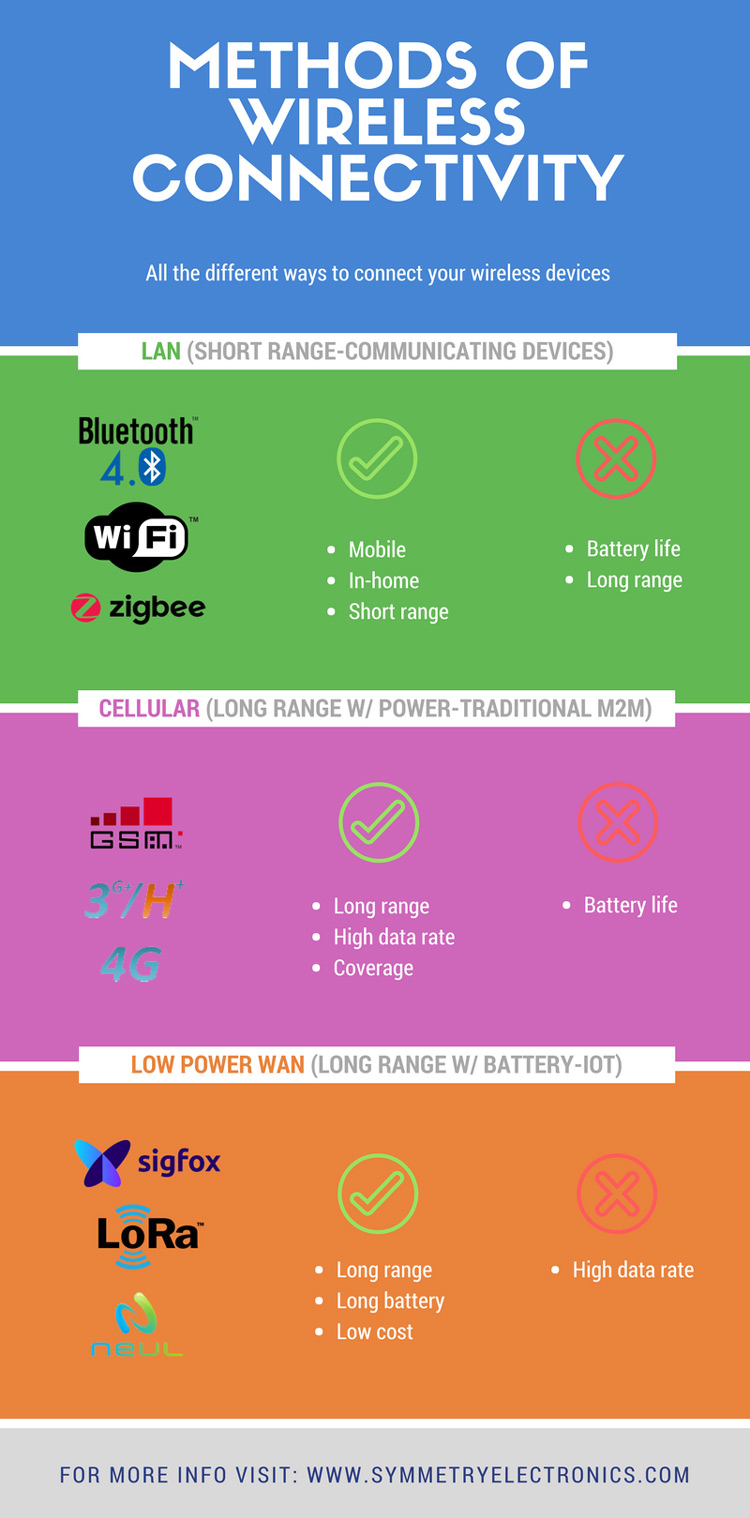- Home
- Symmetry Blog
- [Infographic] What is LPWAN, and How Does It Compare?
[Infographic] What is LPWAN, and How Does It Compare?
About Symmetry Electronics
Established in 1998, Symmetry Electronics, a Division of Braemac, is a global distributor of electronic components and systems. Combining premier components and comprehensive value-added services with an expert in-house engineering team, Symmetry supports engineers in the design, development, and deployment of a broad range of connected technologies.
Exponential Technology Group Member
Acquired by Berkshire Hathaway company TTI, Inc. in 2017, Symmetry Electronics is a proud Exponential Technology Group (XTG) member. A collection of specialty semiconductor distributors and engineering design firms, XTG stands alongside industry leaders TTI Inc., Mouser Electronics, and Sager Electronics. Together, we provide a united global supply chain solution with the shared mission of simplifying engineering, offering affordable technologies, and assisting engineers in accelerating time to market. For more information about XTG, visit www.xponentialgroup.com.

The options available for wireless IoT connectivity continue to grow. Popular connectivity methods like Wi-Fi and Bluetooth are accompanied by more specialized technologies that make push the limits of what is possible. One such technology is a fairly new type of networking called LPWAN.
LPWAN, short for Low Powered Wide-Area Network, is unique in providing wireless connectivity that is both long range and low power. LPWAN is not a singular technology, but rather a term used to describe any wireless technology that achieves a long operating range while maintaining low power requirements. LPWAN platforms are usually created with IoT applications in mind. Some of the most popular LPWAN technologies include LoRa, Sigfox, RPMA, and Weightless.
While other types of wireless connections like Wi-Fi, Bluetooth, and Cellular are very popular choices among IoT OEMs, most of them lack an adequately long range of coverage or they require too much power input to operate on a consistent basis. This is where LPWAN shines, filling the gap between long range coverage and low power requirements that other wireless technologies cannot maintain.
Continue reading to find out how LPWAN differs from LAN and Cellular technologies.
LAN vs. Cellular vs. LPWAN: A Comparison of Three Types of Wireless Connectivity in IoT Devices
LAN (Local Area Network)
- Includes WiFi, Bluetooth, Zigbee
- Well established standards
- Short Range
- Good for mobile and in-home devices
- Poor Battery Life
- Not good for long range applications
Cellular
- Includes GSM, 3G, 4G, LTE
- Well Established Standards
- Long Range
- High Data rates
- Good Coverage
- Poor Battery Life
LPWAN (Low Power Wide-Area Network)
- Includes LoRa, Sigfox, RPMA, Neul
- Emerging PHY Standards
- Long Range
- Long Battery Life
- Low Bandwidth
- Low Cost
- Not Good for applications requiring high data rates
Watch our video below for more information about LoRa development:
Multi-Tech offers excellent LoRa development kits to help you get started with your LPWAN IoT application. View the Multi-Tech products page for more information.


